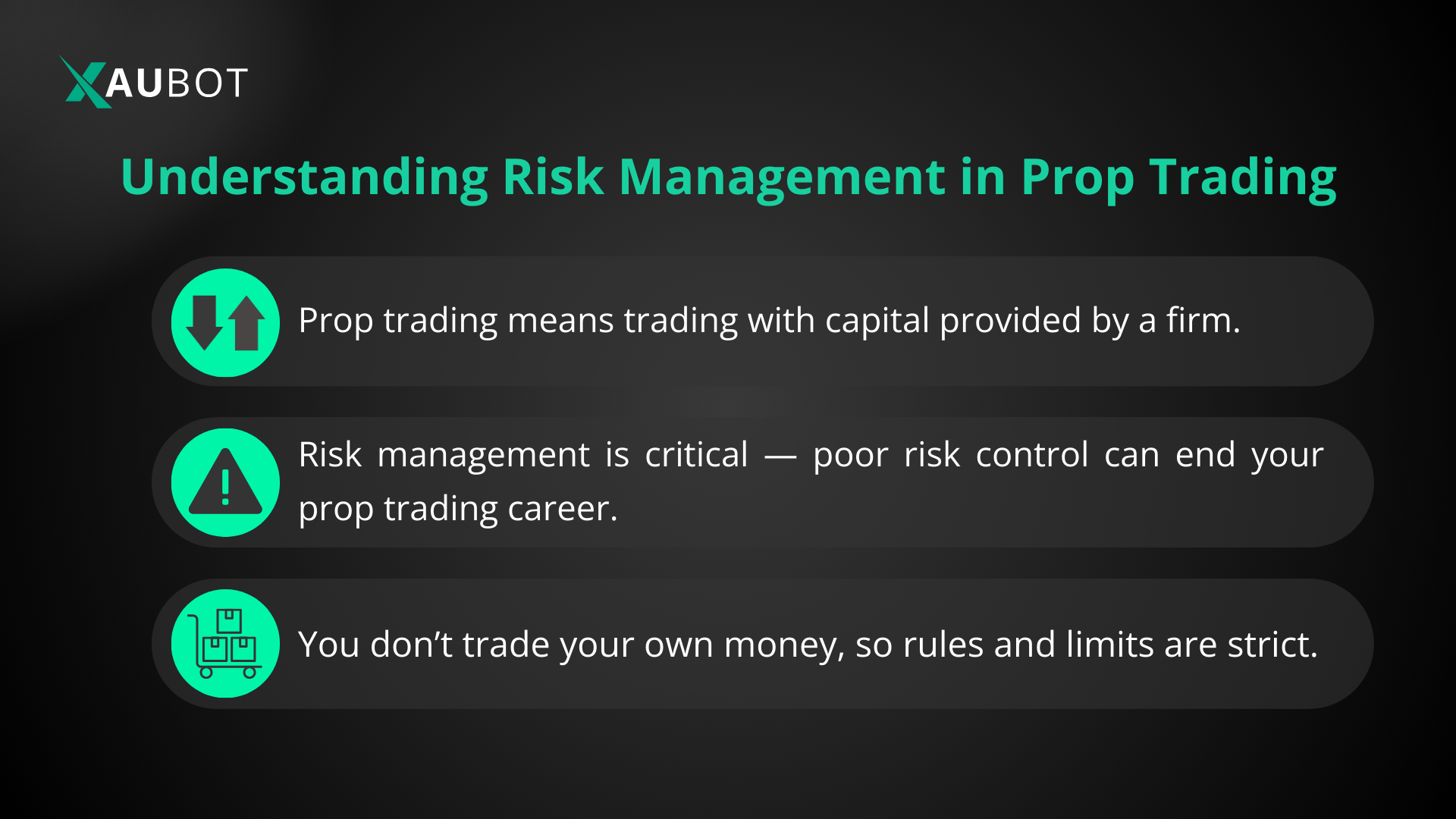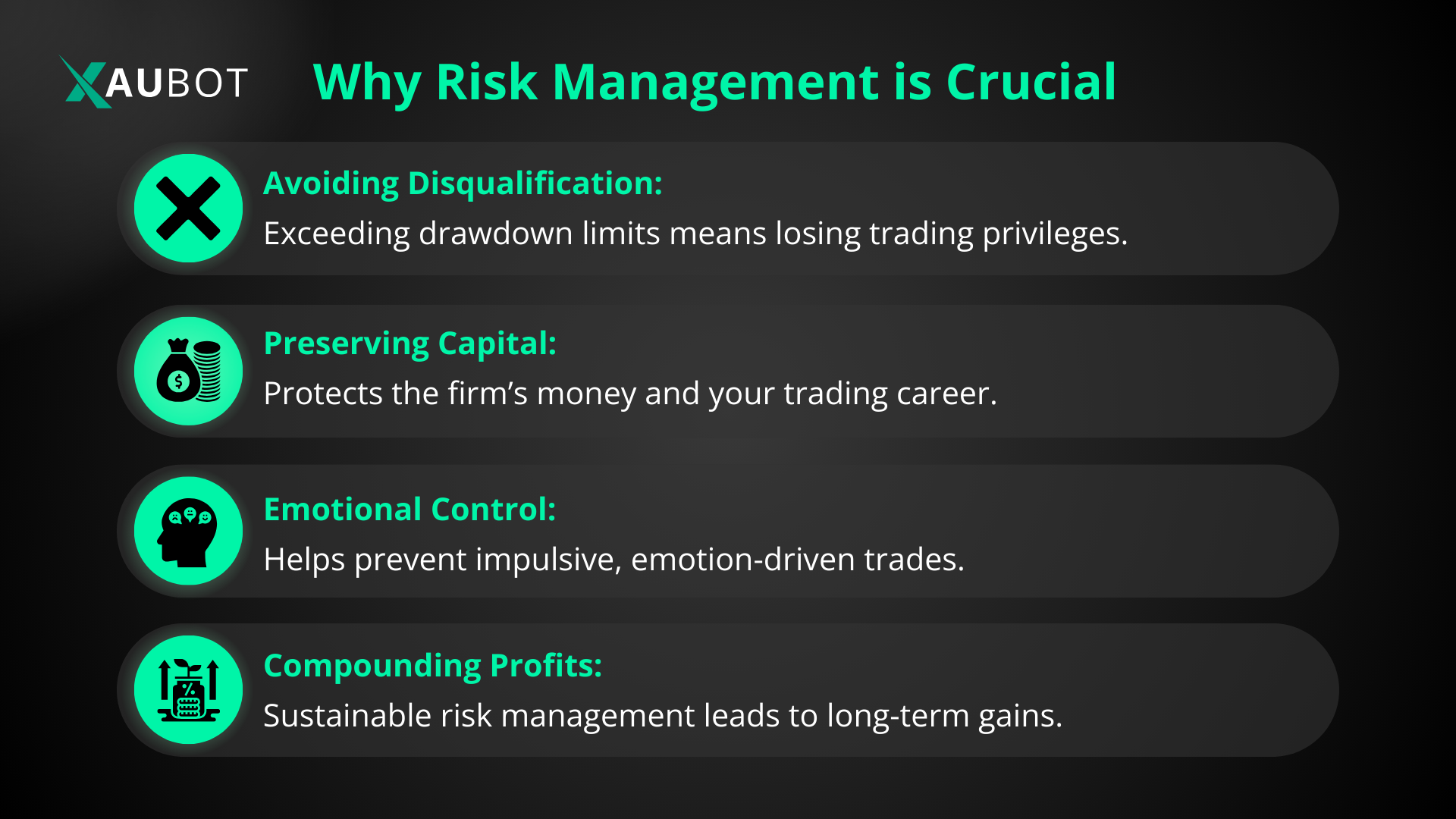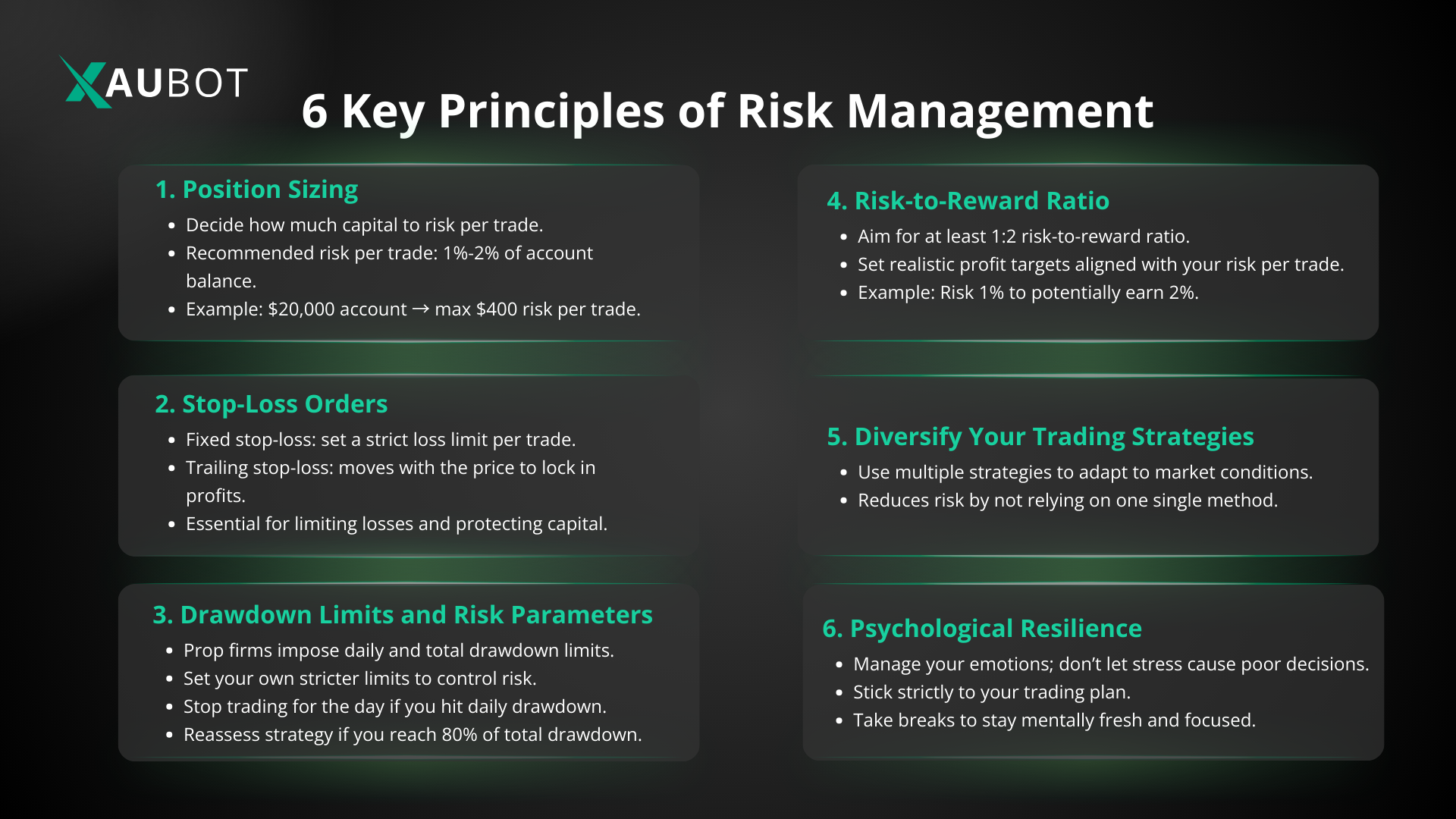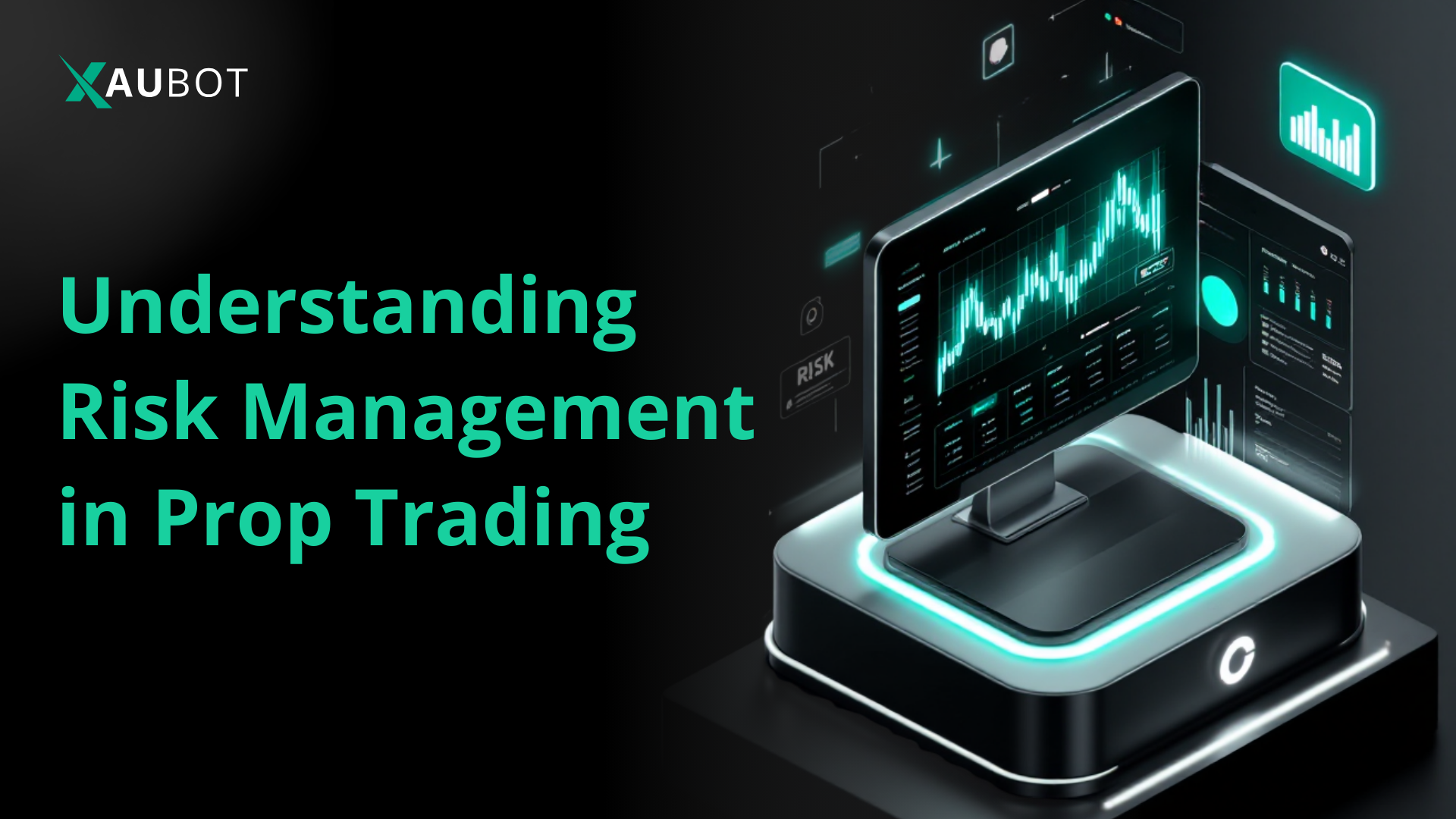Prop trading or proprietary trading takes risk management to a whole new level. Never before has risk management been so important and crucial for a trader.
This is because lack of risk management in the world of prop trading can mean the end of your career as a prop trader.
The idea behind prop trading is that a company, which is the prop firm, will provide you with capital to trade. This is an excellent opportunity for those traders who might not have access to a lot of equity, but they have the skill and knowledge of trading.
Prop firms provide this opportunity for you to gain access to the capital. But as a prop trader you are always under tight rules by the firm. There are risk parameters defined for you. You have to be very careful about those.
The way to do that is through excellent risk management. In this article, we are going to provide you with a deep understanding of risk management in prop trading.

What is Risk Management in Prop Trading?
When you are trading with your own capital, risk leads to the loss of capital. You might be able to get enough equity together again and resume trading like always.
But as a prop trader, risk can mean the end of your career as a prop trader. You can get disqualified. You do not just get second chances to try trading with the firm’s money. So there is a lot more at stake in the case of prop trading.
This is why risk management is different in nature in prop trading.
Let’s break it down to some simple elements. These are the basics of risk management in prop trading:
- Position sizing: this is related to the amount of capital that you put at risk in every trade.
- Stop-loss orders: this well-known order is of course a safety trigger that will close the position once it hits a predefined level of loss.
- Drawdown limits: this is extremely important in prop trading, because the prop firm will define a daily and a total drawdown for your account, which must not be passed or else you will be disqualified as a prop trader.
- Risk-to-reward ratio: this one is a little difficult to attain. Your risk to reward ratio must be such that it can allow you to gain enough profits and at the same time not expose your account to excess risks.
Why Risk Management is Crucial in Prop Trading

Now let’s take a look why risk management is more important in prop trading. You already have a general idea of this concept. But here we will break it down into clear factors:
Avoiding Disqualification:
First and foremost, risk management will help you not get disqualified! Prop firms all have a drawdown limit for their traders. Depending on the firm, these limits can be daily limits plus a total limit. This means, you have a defined daily drawdown limit that you must not hit in addition to a total drawdown (which is usually about 10% to 20% of the total account capital) for your account.
Preserving Capital:
Always remember that prop trading is trading with someone else’s money. When you are trading with someone else’s money, capital preservation is key.
Capital preservation
It’s the key to your sustainable activity as a prop trader and being able to gain the benefits of it.
Emotional Control:
Prop trading can really be a high pressure career for a trader. Under such conditions, it is easy to fall prey to your emotions. A huge advantage of risk management is that it will keep you away from emotional decision making.
Compounding Profits:
You might think that low risk means low profit. But that mentality is not totally correct. This is because prop risk management and controlling risk exposure can lead to compounding profits.
By keeping a tight and well-structured risk management mechanism, you can enjoy prolonged profits in the long run. This is a sustainable path – a career as a trader.
Key Principles of Risk Management in Prop Trading

So, let’s get right down to it. Here, we want to talk about the key principles that are involved in prop trading risk management. By understanding these factors, you can achieve the best risk management for prop trading.
Position Sizing
One of the most important aspects of any risk management approach is of course position sizing. It refers to calculating the size of each position and how much capital you take to each position.
Correct calculation of position size is very important as it will allow you to take advantage of all opportunities for profits and at the same time not be exposed to unnecessary risk.
- Risk Per Trade: you need to know exactly how much you are going to risk per trade. There is a general rule that says you should not risk more than 1% to 2% of the entire account balance per trade.
For instance, if you are trading with an account balance of $20,000 with a risk per trade of 2% it means you will take a maximum of $400 per trade.
Stop-Loss Orders
An ever present pillar of any risk management approach is the stop loss order.
A stop loss order will define a threshold for loss. This means when your open position goes into loss and the loss goes up enough to activate the stop loss order, it will automatically close your position.
As a prop trader, you must be able to use the stop loss order as best as you can.
- Fixed Stop-Losses: the conventional method is of course to go with a fixed stop loss, where you define a percentage for your positions and whenever it goes into loss in that amount, it will activate.
For the sake of prop trading, you can use tighter and stricter fixed stop losses.
- Trailing Stop-Losses: another option is to go with a trailing stop loss. A trailing stop loss, as the name suggests, is not a fixed percentage. It is a distance from the price. What does it mean? It means the stop loss will move with the market movements.
As a prop trader, a trailing stop loss can help you take more advantage of price movements.
Drawdown Limits and Risk Parameters
Prop firms will already impose drawdown limits on you. These drawdown limits can be daily and also a total drawdown set on your account.
You should have drawdowns as part of your trading plan and trading approach for yourself.
- Daily Drawdown: it is recommended that you have a daily drawdown for yourself, which of course must be lower than the prop firm’s daily drawdown. Once you hit your own daily drawdown you must stop trading for the day and evaluate.
- Overall Drawdown: similarly you must have a total drawdown also set for your trading approach and trading plan. The consensus among traders is that if you hit 80% of your own total drawdown, you should reconsider your entire trading approach.
Risk-to-Reward Ratio
The element of risk to reward simply refers to the amount of risk you are willing to take for potential profit.
It is also generally accepted that a risk to reward ratio of 1:2 is an ideal ratio which means you aim to potentially make 2 dollars for every 1 dollar that you risk.
- Set Realistic Targets: while risk management is extremely important in prop trading, you should still make sure that your targets are realistic in terms of profits.
For example, if you are risking 1% of your account balance per trade, then you should aim to make 2% in return.
Diversify Your Trading Strategies
This technique is not directly a risk management method, but it can be very helpful in risk control and management. Using a diversity of trading strategies can bring a dynamic nature to your entire trading approach, which itself can help lower risk.
This way, instead of just using a single strategy in all conditions, you can use different methods given the conditions of the market.
Psychological Resilience
A very important aspect of risk management is being able to manage your own emotions. Prop trading is very stressful and you are always under the rules and conditions of trading set by the prop firm. It takes a very disciplined trader to be a successful prop trader.
- Stick to Your Plan: a great way to make sure that you do not make emotional decisions is to stick to the plan that you have.
Of course for this purpose you need to already have a well-structured trading plan.
- Take Breaks: this is a general recommendation for all traders whether prop traders or otherwise, you should know that it is okay to take a break from trading in order to reevaluate and resume stronger.
Risk Management Is the Key to Sustainable Prop Trading
Finally, you need to know that the aim of this article was to show you how you can be a prop trader for the long run and sustainably.
For this purpose, risk management is absolutely the foundation. In this article, we discussed various factors and elements for the best prop trading risk management, which included position sizing, stop loss orders, drawdowns, risk to reward ratio, etc.
